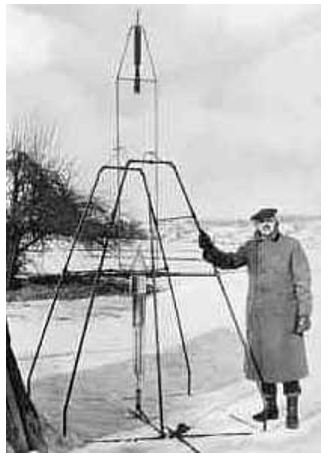History and Design of Rockets
The Beginnings
Rockets, of sorts, have been used in warfare for a thousand years. The Chinese invented black powder, and rockets propelled by this combination were used for a millennium. They illuminated Old Glory “in the rocket’s red glare” during the Revolutionary War. But it was not until last century that rockets that eventually would take man and his robot emissaries into space were developed.
Modern rocketry began on a cold, snow covered field in Massachusetts on March 16, 1926. On that day Robert H. Goddard flew the first liquid fueled rocket.
It was a gangly, Rube Goldberg affair, built to prove the concept more than anything. It did that, but little else, reaching a heady height of 42 feet. Later, Goddard would secure funding from the Guggenheim Foundation to continue his research and build rockets with more streamlined airframes that would achieve more impressive results, eventually hitting 8900 feet. Just before WWII he received a contract from the Navy to develop rockets for rocket assisted takeoffs for aircraft.
Unfortunately, no one in the military seemed interested in the potential of Goddard’s rockets.
But Someone Was
There was a group in Germany that was enthralled by his experiments, It was called the Verein für Raumschiffahrt (ViR)—translation: Society for Spaceflight. Its members included some familiar names: Willy Ley, Walter Hohmann, Eugen Sanger, and a young student named Wernher von Braun. The group was mentored by a researcher who had written several books on the possibility of achieving spaceflight with liquid propellants—Hermann Oberth.
Hermann Oberth in one of his books developed the concept of multi-stage rockets. And he had even been technical consultant to a German film company for its silent science fiction film “Frau im Mond”—translation: The Girl in the Moon. The rocket he designed for the film featured his multi-stage concept, and seems a precursor of Von Braun’s Nova concept as detailed in a series of Collier Magazine articles in the 1950s. Oberth is on the right in the picture below. Oberth even built a working model of the rocket. It produced 15 pounds of thrust but never flew
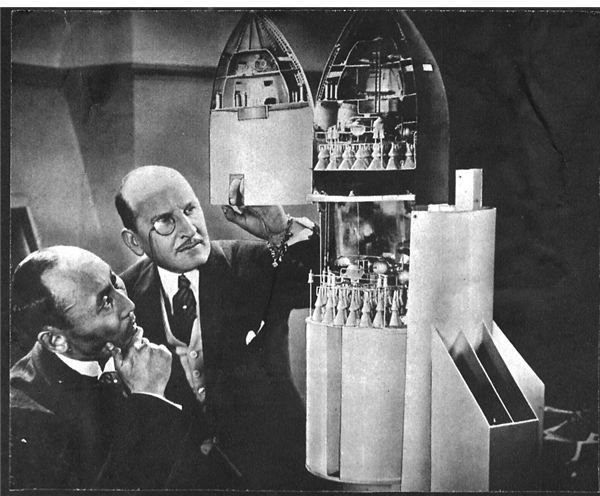
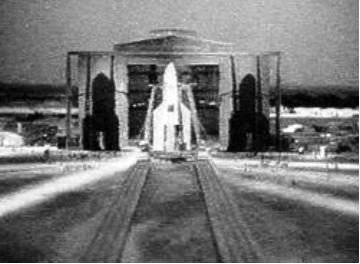
.
The ViR built and flew several rockets, achieving altitudes of 8000 feet.
By this time Hitler had come to power, and the ViR was shut down. But the Reich, unlike the U.S., saw the potential in a long range ballistic rocket. Von Braun was tapped to head the project. He saw this as a way to pursue his goal of developing large rockets that could one day go into space, so he took the job. He brought many of his ViR cohorts with him.
The rest, as they say, is history. The A4—we call it the V2—became the world’s first ballistic missile. It had a range of only 200 miles, but its impact on London was terrifying.
At the end of the war, von Braun collected a group of his colleagues and they headed out of their facility at Peenemunde towards the American lines. They were eventually found, and eventually became the core of the Army’s Missile development program at Redstone Arsenal in Huntsville, AL.
There were dozens of V2s at Peenemunde, and the U.S. collected many of them. They became our first upper atmosphere research rocket.
Unfortunately, not all the Peenemunde group headed for the U.S. lines. Some went to the Soviet lines. We will see how that developed in Part 2 of this series.
Sniffing the Edge of Space
The captured V2s were immediately used by the Army, first as a test bed for development of our own artillery rockets, then as upper atmosphere sounding research vehicles. These flights were made from White Sands Proving Grounds in New Mexico.
Sixty-seven V2s were launched from White Sands. Not all were successful. Some exploded just after launch. The record altitude achieved was just over 132 miles.
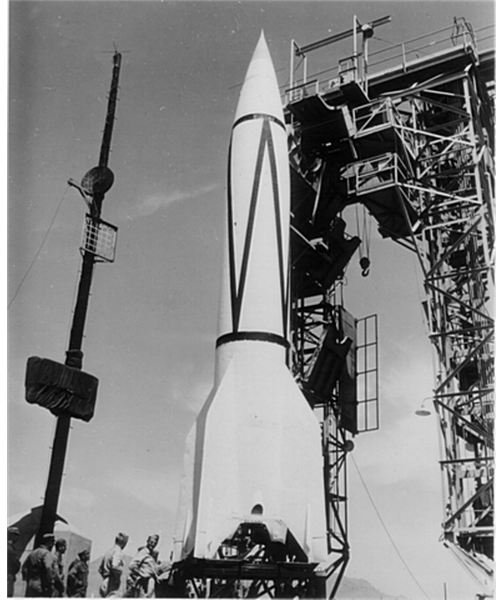
Experience with the V2 gave scientists data they needed to develop our own sounding rockets. The first was the WAC Corporal. It was designed not just as a sounding rocket, but as a test bed for development of artillery rockets by the Army Missile Command at Redstone Arsenal. By the way, the WAC did not refer to the Women’s Army Corp, but stood for ‘Without Attitude Control.’ In other word, it was a free flight bird.
It was a small vehicle, one foot in diameter and just a tad more than 16 feet long. Its engine was also small, generating just 1500 pounds of thrust. Propellant was Red Fuming Nitric Acid and Aniline, a hypergolic mixture, making ignition sure fire (forgive the pun). It was launched from a tower using a solid booster, a system that would be used in later projects.
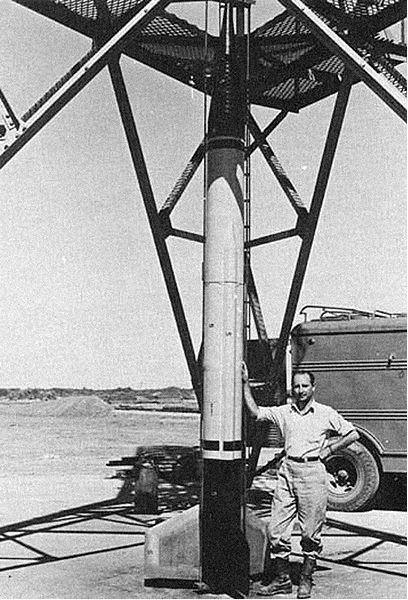
Developed by a fledgling Jet Propulsion Institute (JPL), the WAC Corporal would lead to one of the most successful sounding rockets of all time—one that ‘all grown up’ would play an important role in America’s space program. The WAC Corporal itself would play a seminal role in ICBM and space launch vehicle development and would lead to the Army’s first artillery rocket, the Corporal.
The WAC Corporal was flown 17 times, reaching a top altitude of 80 miles. Later, it would be mated with a V2 in Project Bumper as a test bed for multi staging. Six bumpers were launched from White Sands. Bumper 5 attained an altitude of 248 miles, a record for the time. It had left the atmosphere and gone into space.

After flight 6, two Bumpers were launched from an undeveloped Cape Canaveral Test Range to test the capability of a multi-stage rocket to pitch over to a low angle and fly close to horizontally in the atmosphere. Bumper 7 reached a velocity of Mach 9, the fastest, at the time, any vehicle had ever flown in Earth’s atmosphere.
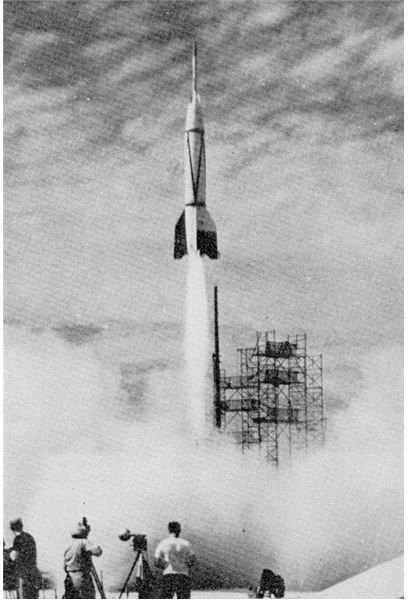
Building a Better Upper Atmosphere Mouse Trap
WAC Corporal gave JPL scientists the confidence they could design and build an even better sounding rocket. So much confidence, in fact, some of them formed their own company—Aerojet General. (It is now a subsidiary of GenCorp, formerly General Tire and Rubber Co.)
Their confidence was well founded. They built the most successful sounding rocket of all time—the Aerobee. It was small, 20 feet long and 15 inches in diameter. It used basically the same fuel as the WAC Corporal, and was launched from a tower with a solid booster.
But it had a much lighter airframe than its predecessor, and its engine produced 4100 pounds of thrust, so it could carry a heavier payload. The original Aerobees achieved a maximum altitude of 86 miles, but carried out major experiments in the upper atmosphere.
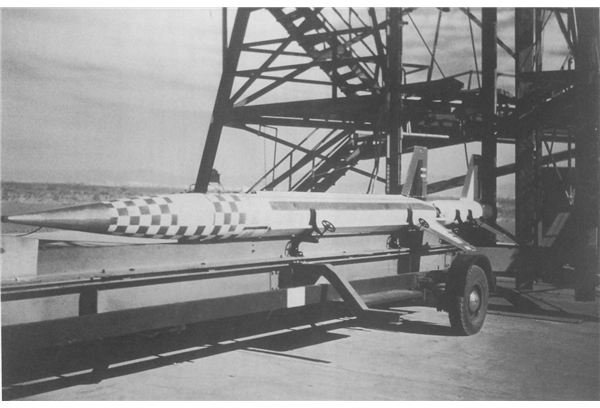
Still, Aerojet scientists and engineers knew they could do better—and they did. The result was the Aerobee-Hi. With a lengthened airframe (31 feet) providing more propellant, the Hi offered more burn time and the potential for higher altitudes.
It did not disappoint. The Hi eventually reached an altitude of 168 miles. Through its career, 226 Aerobees and His were flown, with a 91 percent success rate.
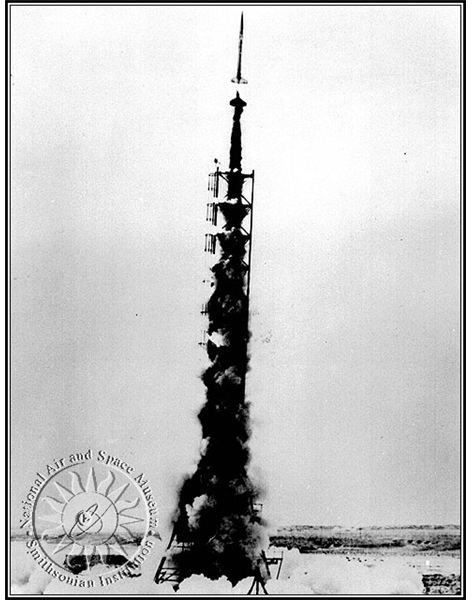
But that’s just Aerobees and His. There were many other variations to the concept. One used the Hi as a booster for a second stage Sparrow missile. This configuration was designated the Aerobee 300. One reached an altitude of 260 miles.
Souping it Up
But the Aerojet guys had more tricks up their sleeves. They had a way to make the slim, elegant Aerobee into a take no prisoners rocket. The Aerobee 350 was almost 40 feet long and 22 inches in diameter. It had four Aerobee engines for a total thrust of 16,400 pounds. This design would be significant as the space age dawned.

The vehicle, with payload, weighed over 7000 pounds. The small solid booster used for previous Aerobees would not do for this behemoth.
There was a solution. By now, 1957, the Army’s Anti-aircraft missile Nike-Ajax was obsolete. There were hundreds of the Nike boosters available. It was mated to the 350, and a new sounding vehicle was ready. In the picture below, note the distinctive wedge shaped fins of the Nike booster.
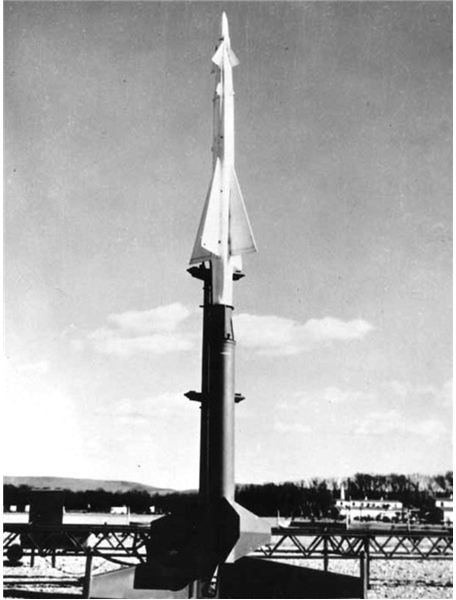
Eventually, a 350 reached into space 232 miles above the Earth.
And the Nike Boosters would become the basis for a team of sounding rockets all the way into this century.
Sources and Credits
Sources:
https://web.archive.org/web/20080110163113/https://www.wsmr.army.mil/pao/FactSheets/bump.htm
https://history.nasa.gov/SP-4401/ch4.htm
https://history.nasa.gov/SP-4401/ch8.htm
https://www.spacearium.com/filemgmt_data/files/Sounding_Rockets_History.pdf
Peter Alway, Rockets of the World, 1993
Credits:
V2 and WAC Corporal: White Sands Museum
Aerobee pictures: Jet Propulsion Labs and National Air and Space Museum
Bumper launches: NASA
All other photos: Personal collection
This post is part of the series: All About Rockets
The design of modern rockets went through many variations in their brief history since 1926. Sounding rockets provided the basis for the technology that would eventually take us into space.
